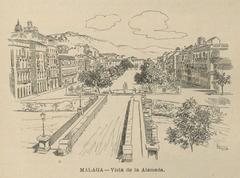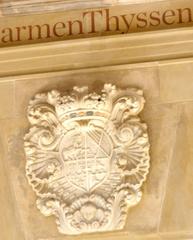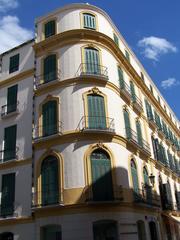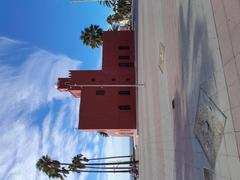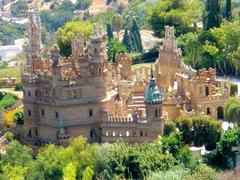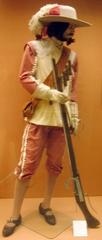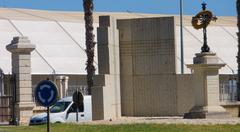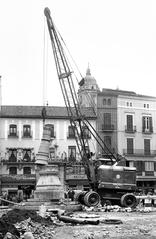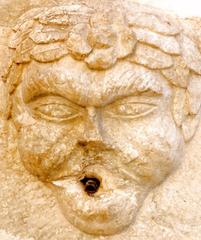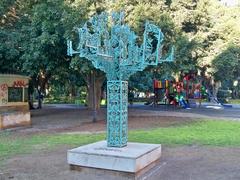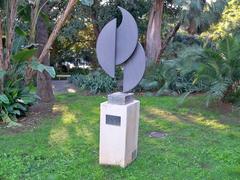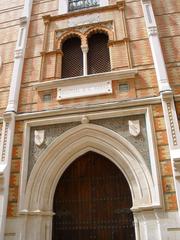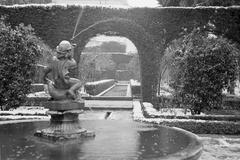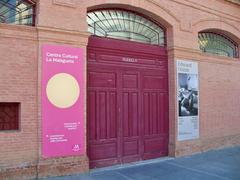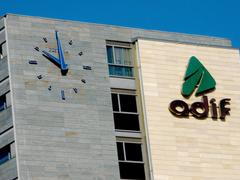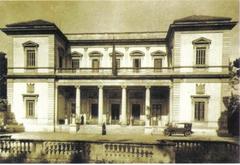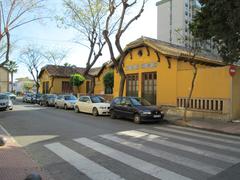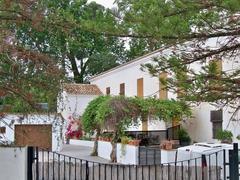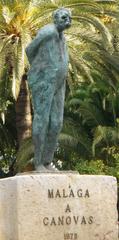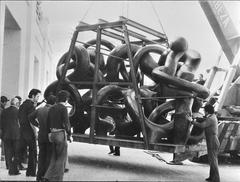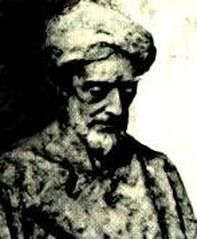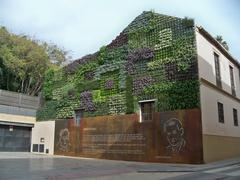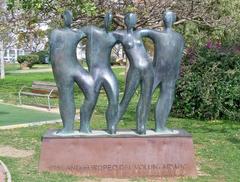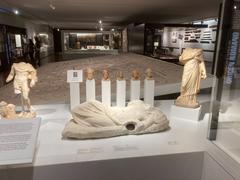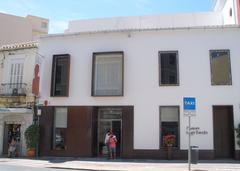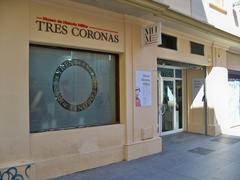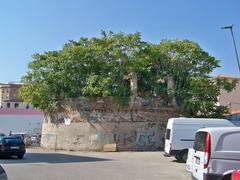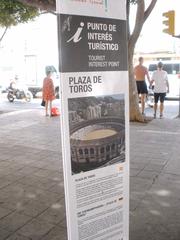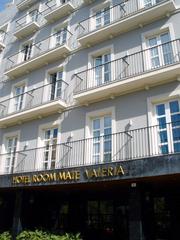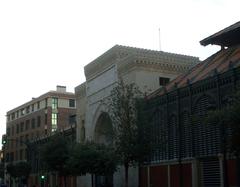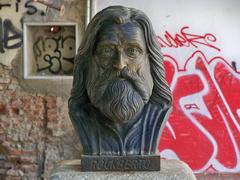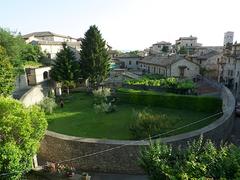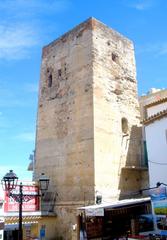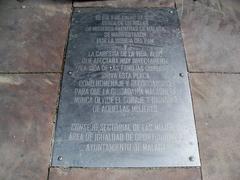Mausoleo de Salvador Barroso Málaga: Visiting Hours, Tickets & Travel Guide
Date: 14/06/2025
Introduction
Set within the storied grounds of San Miguel Cemetery in Málaga, Spain, the Mausoleo de Salvador Barroso stands as a prominent testament to 19th-century civic pride, funerary art, and Málaga’s cultural evolution. This guide provides a detailed exploration of the mausoleum’s history, architectural significance, practical visitor information—including hours, tickets, and accessibility—and offers insights to help you make the most of your visit. For direct planning and additional resources, consult official platforms like the San Miguel Cemetery official page and in-depth cultural articles from Revista Adiós.
Table of Contents
- Historical Background: The Rise of Monumental Cemeteries in Spain
- Salvador Barroso: Life, Legacy & Civic Impact
- The Mausoleum: Architecture & Symbolism
- Visitor Information: Hours, Tickets, Tours & Accessibility
- How to Visit & Nearby Attractions
- FAQs
- Summary and Final Tips
- Sources
Historical Background: The Rise of Monumental Cemeteries in Spain
From Churchyards to Open-Air Museums
In the late 18th and early 19th centuries, Spain, like much of Europe, shifted burial practices from overcrowded city churchyards to landscaped cemeteries outside urban centers. This transition, driven by Enlightenment-era public health reforms, royal decrees, and changing social attitudes, gave rise to the “monumental cemetery”: a place for both remembrance and artistic display (Spain.info).
San Miguel Cemetery, established in Málaga in the early 1800s, is a prime example of this movement. With its grand mausoleums, tree-lined avenues, and elaborate funerary sculptures, it quickly became a canvas for the city’s aspirational bourgeoisie, reflecting status, taste, and evolving ideas about memory and virtue.
The Golden Age of Funerary Art
Throughout the 19th century, the growth of Spain’s bourgeoisie led to the commission of elaborate family pantheons and mausoleums. Architectural styles ranged from neoclassical to neo-Egyptian, each loaded with symbolism. Málaga’s San Miguel Cemetery, with over 250 such monuments, is recognized as one of Andalusia’s richest repositories of funerary art (Revista Adiós; Spain.info).
Salvador Barroso: Life, Legacy & Civic Impact
Biography and Achievements
Salvador Barroso, born in Granada, became a pivotal figure in Málaga’s early 19th-century legal and civic sphere. As Dean of the Illustrious Bar Association of Málaga (1831, 1838), Síndico of the City Council, and a royal-appointed legal consultant, Barroso’s influence extended across legal, economic, and social realms (Cementerio San Miguel).
A philanthropist dedicated to education, he established awards for mathematics and drawing to encourage the intellectual growth of Málaga’s youth. His brother, Juan, ensured that these initiatives and Barroso’s own legacy were memorialized with a grand mausoleum.
Family Connections: The Picasso Link
Barroso’s lineage intersects with Málaga’s most renowned cultural figure, Pablo Picasso. His grandnephew, Juan Nepomuceno Blasco Barroso, married María Remedios Alarcón Herrera, godmother to Picasso. Their children were Picasso’s second cousins, and several family members are interred at San Miguel Cemetery (Cementerio San Miguel). This connection adds an artistic thread to Barroso’s enduring influence.
The Mausoleum: Architecture & Symbolism
Design and Construction
Completed in 1845, the Mausoleo de Salvador Barroso was the first monumental tomb in San Miguel Cemetery, designed by Cirilo Salinas Pérez. It features a soaring obelisk on a raised platform at the intersection of Calle de la Concepción and Calle de Santa Isabel, symbolizing the Romantic era’s ideals of enduring memory and civic virtue (Cementerio San Miguel; Boletín de Arte).
Neoclassical Style and Artistic Elements
- Neoclassical Motifs: The mausoleum’s clean lines, symmetry, and classical orders (columns, pilasters, friezes) are hallmarks of neoclassical architecture, reflecting Enlightenment values and the city’s growing civic consciousness (Boletín de Arte).
- Sculptural Symbolism: Reliefs and statuary depict allegories of Justice, Wisdom, and Civic Virtue, while laurel wreaths, urns, and torches symbolize immortality and remembrance.
- Inscriptions: Thoughtfully chosen epitaphs, often in Latin, underscore Barroso’s virtues and the mausoleum’s role as a civic as well as personal memorial.
The Barroso mausoleum set a precedent for more than 250 later pantheons in San Miguel, cementing the site as an open-air museum of funerary art (El Español).
Visitor Information: Hours, Tickets, Tours & Accessibility
Visiting Hours
- General Hours: San Miguel Cemetery is typically open daily from 9:00 AM to 6:00 PM. Hours may vary due to holidays, restoration works, or special events (visita.malaga.eu).
- Best Times to Visit: Early mornings and late afternoons provide comfortable temperatures and excellent lighting for photography. All Saints’ Day (November 1) offers a vibrant cultural experience.
Tickets and Admission
- Entry: Free for independent visits. Donations for preservation are welcomed.
- Guided Tours: Available via the cemetery, Málaga’s tourism office, or local cultural groups. Tours—usually in Spanish—highlight the cemetery’s history, architecture, and notable figures. Advance booking is recommended for group tours.
Accessibility
- Wheelchair Access: Main paths are paved and generally accessible, though some older mausoleums may have steps or uneven surfaces.
- Visitor Facilities: Amenities are limited; plan ahead for restrooms and refreshments.
- Etiquette: As an active cemetery and heritage site, respectful behavior is expected. Photography is welcomed but should be discreet, especially during services.
How to Visit & Nearby Attractions
Getting There
- Location: Cementerio de San Miguel, Capuchinos district, north of Málaga’s historic center.
- Transport: Reachable by local bus, taxi, or a 20–30 minute walk from the city center. The entrance is marked by a neoclassical arch and clear signage.
Nearby Attractions
- Historic Center: Combine your visit with key landmarks such as the Alcazaba, Gibralfaro Castle, and Málaga Cathedral (andalucia.com).
- Museums: Picasso Museum, Carmen Thyssen Museum, and Málaga Museum offer deeper insight into the city’s cultural fabric (voyagetips.com).
- Parks: Stroll through Málaga Park or relax in the city’s botanical gardens.
FAQs
Q: What are the visiting hours for the Mausoleo de Salvador Barroso?
A: San Miguel Cemetery is typically open from 9:00 AM to 6:00 PM, but check the official website for updates, especially during holidays or restoration.
Q: Is there an entrance fee?
A: Entrance is free; guided tours may require a fee.
Q: Are guided tours available in English?
A: Most tours are in Spanish, but self-guided options with translation apps are possible.
Q: Is the site accessible for people with disabilities?
A: Most paths are accessible, but some areas have steps or uneven surfaces.
Q: Can I take photographs?
A: Yes, photography is allowed and encouraged—please be respectful of mourners and ceremonies.
Summary and Final Tips
The Mausoleo de Salvador Barroso stands not only as the oldest monumental tomb in San Miguel Cemetery but as a symbol of Málaga’s 19th-century transformation and civic ideals. Its neoclassical design, rich symbolism, and historical connections—spanning philanthropy, legal achievement, and even the Picasso family—make it a unique and rewarding stop for culture seekers and history enthusiasts.
Visitor Tips:
- Visit during daylight for the best experience.
- Book guided tours in advance for deeper insight.
- Pair your visit with nearby historic sites and museums.
- Respect the cemetery’s solemn atmosphere.
- Use translation resources if you do not speak Spanish.
For the latest updates, guided tour info, and interactive maps, download the Audiala app. Follow us on social media for event news and travel inspiration.
Sources
- This guide draws on detailed research and the following sources:
Image suggestions:
- High-quality images of the mausoleum exterior and key sculptural elements (alt text: “Mausoleo de Salvador Barroso in San Miguel Cemetery, Málaga”).
- Photos of the San Miguel Cemetery entrance and main avenues.
- Interactive map linking to the cemetery’s location and nearby attractions.
